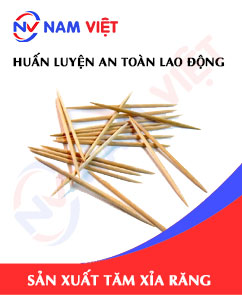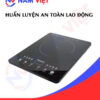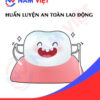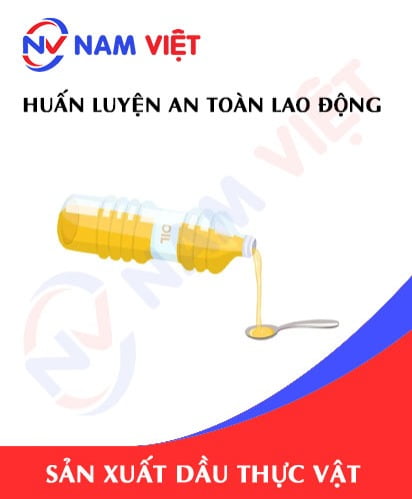Occupational Safety Training in Toothpick Production
99,000 ₫
Note: The above price is calculated for one person, and the price may fluctuate depending on the number of trainees participating in the course and market movements. For more accurate pricing support, please refer to the quotation table or contact our consulting staff directly.
Occupational safety is an important issue in toothpick manufacturing factories and needs to be addressed promptly to ensure the health and safety of workers, while enhancing the reputation of businesses. The Occupational safety training course is one of the effective solutions to raise awareness of accident prevention for workers participating in toothpick production.
Table of Contents
Toggle1. Overview of Toothpicks
a. What is a toothpick?
A toothpick is a tool used to clean teeth and remove food particles stuck between teeth. Toothpicks are usually made from wood, plastic, or fiberglass and have a small, pointed stick shape. They are commonly used after meals or to clean teeth after brushing.

b. Machinery used for toothpick production
The toothpick production process mainly includes cutting, grinding, gluing, and packaging. Machinery involved in toothpick production includes:
- Toothpick cutting machine: Designed to cut toothpicks from wooden or plastic sticks. It typically uses spiral blades to cut each toothpick to the required diameter and length.
- Toothpick grinding machine: After cutting, toothpicks are sent to a grinding machine to remove rough fibers and smooth the surface. The machine usually uses grinding stones and a conveyor belt to process the toothpicks.
- Toothpick gluing machine: Used to apply an even layer of glue onto the toothpicks. The glued toothpicks are then passed through a drying machine to solidify the glue.
- Toothpick packaging machine: Finally, toothpicks are packed into plastic bags or paper boxes and sealed to ensure product safety and hygiene.
Depending on the production technology and scale, machinery can be customized to meet the specific requirements of each toothpick manufacturer.

c. Toothpick manufacturers in Vietnam
Some toothpick manufacturers in Vietnam include:
- Tam Dang Production and Trading Company Limited: Specializes in oral hygiene products, including toothpicks, toothbrushes, and toothpaste. Products are produced under quality-assured processes that meet health and safety standards for consumers.
- Tam An Phat Production and Trading Company Limited: Produces and supplies oral care products, including toothpicks. The company prioritizes product quality and consumer health, applying strict standards in production.
- Dai Nam Joint Stock Company: Produces oral hygiene and health care products, including toothpicks. Their products are made using modern technology and meet high-quality standards.
- Hong Ha One-Member Production and Trading Company Limited: Produces oral hygiene products, including toothpicks. The company commits to using standardized materials and production technology to ensure consumer safety.
d. Specific roles in a toothpick manufacturing factory
Group 1
- CEO, Deputy CEO, and department heads in the toothpick manufacturing factory.
Group 2
- Safety officers: Manage safety in the factory, design safety procedures, supervise, and ensure employees follow safe work practices.
Group 3
- Material preparation: Raw materials for toothpick production include wood, plastic, metal, nylon fibers, etc. Manufacturers must select high-quality materials that meet production requirements.
- Material cutting: After preparing materials, they are cut into appropriate sizes and shapes for production.
- Toothstick production: The toothstick production process includes cutting, treatment, coating or plating, and decoration as required. The stick is then attached to the toothpick tip through pressing or spinning.
- Tip processing: Tip processing involves polishing, cutting, and shaping to create a smooth and convenient end for use.
- Packaging: After production, toothpicks are packed into containers to protect them and maintain quality until reaching consumers.
- Quality control: Toothpicks are inspected before entering the market to ensure they meet standards and user requirements.
Group 4
- Office, service, sales, and marketing work.
- Production management, quality management, human resources, material management, and financial accounting management.
- Product research and development, packaging design, and new product design.

2. Overview of occupational safety training for toothpick production
This article focuses on Group 3, as they are directly involved in production and face the highest occupational safety risks. Refer to other groups here.
a. What is Group 3 occupational safety training?
- Group 3 occupational safety training consists of sessions that provide awareness and knowledge to prevent workplace accidents for employees.
- The training helps workers recognize hazards, avoid risks, and reduce the likelihood of accidents while working.
REGISTER FOR OCCUPATIONAL SAFETY TRAINING SERVICES
b. Training duration
Initial safety training
- Total training time is at least 24 hours, including assessment time.
- 8 hours of theoretical lessons on safety policies and labor hygiene laws
- 8 hours of theoretical lessons on basic occupational safety and hygiene knowledge
- 4 hours of theoretical lessons on specialized training content
- 2 hours of practical lessons on specialized training content
- 2 hours of theoretical assessment at the end of the course
The training center will schedule multiple sessions depending on worker availability. Typically, there are 6 sessions over 3 days, provided the company can allocate continuous study time.
Periodic safety training
- Before the occupational safety card expires, workers must undergo periodic safety training if they wish to renew, with training time at least 50% of the initial training duration.
Explanation: Total periodic safety training lasts at least 12 hours, including assessment time. After completion and passing the test, workers will have their occupational safety cards renewed.
c. Training content
| No. | TRAINING CONTENT | TRAINING DURATION (HOURS) | |||
| Total | Breakdown | ||||
| Theory | Practical | Assessment | |||
| I | Safety policies and labor hygiene laws | 8 | 8 | 0 | 0 |
| 1 | Overview of legal documents on occupational safety and hygiene. | 6 | 6 | ||
| 2 | System of safety and technical standards. | 1 | 1 | ||
| 3 | Specific regulations from state agencies regarding new, expanded, or renovated facilities and equipment with strict safety and hygiene requirements. | 1 | 1 | ||
| II | Basic knowledge of occupational safety and hygiene | 8 | 8 | 0 | 0 |
| 1 | Basic knowledge of workplace hazards and harmful factors. | 4 | 4 | ||
| 2 | Methods to improve working conditions. | 1 | 1 | ||
| 3 | Safety culture in production and business. | 1 | 1 | ||
| 4 | Rights and obligations of employers and employees; safety policies; roles of safety officers and networks. | 1 | 1 | ||
| 5 | Safety regulations, signs, and use of safety equipment and personal protective gear; first aid and occupational disease prevention skills. | 1 | 1 | ||
| III | Specialized training content | 6 | 4 | 2 | 0 |
| Knowledge of machines, devices, hazardous substances; risk analysis and management; safe work procedures for high-risk equipment and substances. | 6 | 4 | 2 | ||
| IV | End-of-course safety assessment | 2 | 2 | 0 | 0 |
| Total | 24 | 22 | 2 | ||
See more training content of all 6 groups
d. Occupational safety card
After completing occupational safety training and passing the assessment, workers will be issued an occupational safety card (commonly referred to as the Group 3 safety certificate).
The Group 3 card includes information such as full name, date of birth, specific job, and work environment. It also shows training duration, a red seal, and a signature confirming course completion.
According to Clause 2 of Article 24 of Decree 44/2016/ND-CP, there are two cases:
- If the employer and employee have an employment contract, the employer must sign, stamp, and validate the Group 3 safety card after the worker completes the training and passes the assessment.
- If the worker is freelance or temporary and does not have an employment contract, the training unit must sign, stamp, and validate the card after the worker completes the training and passes the assessment.

3. Recognizing Hazards Affecting Workers During Toothpick Production
Hazards affecting workers during toothpick production may include:
- Injuries from knives and machinery: The risk of cuts or punctures is very high when working with cutting tools or knives. Accidents may occur if workers do not wear proper personal protective equipment, do not follow safety procedures, and do not use machinery correctly.
- Environmental contamination: Toothpick production may cause environmental pollution due to the use of chemicals and hazardous materials. Dust and noise can also harm workers’ health.
- Repetitive motion injuries: Working for long periods on repetitive tasks can cause joint injuries, cervical spine degeneration, and muscle problems.
- Temperature and humidity: Toothpick production often takes place in environments with high temperature and humidity, especially in factories located in hot and humid areas. These conditions may cause fatigue, shortness of breath, and affect workers’ health.
- Chemical exposure: Toothpick production may require using hazardous chemicals to clean and process raw materials. Workers must follow safety regulations to avoid direct contact with these chemicals and prevent adverse reactions.
- Electrical hazards: If electrical equipment in the factory is not regularly maintained, insulated, or waterproofed, it can pose an electric shock risk to workers during production.
4. Common Occupational Accidents During Toothpick Production
Common occupational accidents for workers during toothpick production may include:
- Cutting and injury accidents: During toothpick production, the risk of cuts and injuries is very high. Handling and processing raw materials to create toothpicks can cause injuries to workers.
- Chemical accidents: Chemicals used in toothpick production can harm workers’ health if not used or stored properly.
- Fire and explosion accidents: Using electrical tools, metal processing equipment, or fuels like gas during toothpick production can cause fire or explosion accidents if safety procedures are not followed.
- Food safety accidents: Toothpicks are used for cleaning teeth and the oral cavity, so high hygiene and food safety standards are required. If production is not hygienic, the products may pose health risks to users.

5. Safety Measures for Workers in Toothpick Production
Safety measures for workers in toothpick production include:
- Ensure full personal protective equipment such as helmets, safety glasses, masks, gloves, safety shoes, and protective jackets.
- Occupational safety training on safety knowledge, proper use of machinery and equipment, and handling safety incidents.
- Regularly inspect, maintain, and repair machinery to ensure safe operation.
- Maintain cleanliness in the production area to ensure a healthy work environment free of hazardous agents.
- Enhance supervision and management of raw materials and chemicals used in production to prevent hazards to workers.
- Conduct periodic quality checks of products to ensure safety and quality standards.
- Regularly inspect hazardous points in the factory and implement timely mitigation measures.
- Develop and implement fire and explosion prevention plans and use plastics and hazardous chemicals correctly.
- Conduct periodic health checks for workers to detect work-related illnesses early and apply timely solutions.
- Periodically conduct workplace environmental monitoring to collect and analyze harmful factors, then adjust to reduce risks and prevent occupational diseases among workers.
6. Benefits of Occupational Safety Training for Toothpick Production
An Toan Nam Viet provides your business with the following benefits after completing occupational safety training courses under Decree 44/2016/ND – CP regarding occupational safety and hygiene:
- Workers can recognize potential occupational hazards and take preventive measures to avoid accidents.
- Your business can establish risk prevention measures in production, operation, and maintenance processes.
- Reduce costs associated with occupational safety incidents.
- Uninterrupted production increases labor productivity and product quality.
- Compliance with labor safety laws reduces legal risks.
- Enhances professionalism and credibility, boosting your brand image.
Nam Viet’s training courses help individuals prevent external hazards to avoid injuries or even fatalities.
REGISTER FOR OCCUPATIONAL SAFETY TRAINING SERVICE
7. Customer Feedback After Completing Occupational Safety Training for Toothpick Production
An Toan Nam Viet has years of experience supporting businesses in Vietnam, especially in the southern provinces. Our commitment drives increasingly professional occupational safety training. Positive feedback and suggestions from our partners fuel our growth. Below are testimonials from clients we have served.
See more customer interviews after using our service from An Toan Nam Viet
8. Occupational Safety Training Capacity of An Toan Nam Viet
An Toan Nam Viet is a reputable and high-quality occupational safety training center in Vietnam, providing continuous training at factories, production workshops, and construction sites nationwide (all 63 provinces).
REGISTER FOR OCCUPATIONAL SAFETY TRAINING SERVICE
Occupational safety training license
- An Toan Nam Viet has been inspected and certified by the Department of Safety under the Ministry of Labor – Invalids and Social Affairs, confirming compliance for occupational safety and hygiene training. This strengthens our training capacity.

Training materials and lectures
- Before being used in occupational safety training courses, materials are reviewed to ensure accuracy and effective application.
- Instructors follow standardized teaching methods from An Toan Nam Viet, developed by experts in occupational safety and hygiene training to maximize knowledge absorption.
Facilities
- Controlling classroom factors affects training efficiency and knowledge absorption.
- Our training facilities provide spacious classrooms meeting standards for area, lighting, and training equipment.
9. Nationwide Reputable Occupational Safety Training Center
At An Toan Nam Viet, we prioritize professional dedication to occupational safety training. Teaching workers self-protection knowledge helps them gain safety skills while contributing to national development.
We meticulously prepare all details, from teaching tools and equipment to curricula, documents, sound, and lighting.
Our instructors are experienced experts with research on hazard identification and prevention across industries.
Lectures are practical, vivid, and easy to understand, enabling workers to learn comfortably and effectively. Content aligns with Decree 44/2016/ND-CP.
Workers learn hazard prevention and self-protection techniques and apply them appropriately in real work situations.
Our training center provides professional and reputable occupational safety training with the following advantages:
- Competitive training costs without compromising quality.
- Flexible training schedules adapted to company production.
- Fast and lawful certification procedures.
- Experienced instructors with many years in the field.
- Classrooms optimized for teaching efficiency and knowledge absorption.
- Lectures tailored to workplace safety in businesses.
- An Toan Nam Viet provides dedicated, professional, and prompt support for clients.

10. Additional References for Occupational Safety Training in Toothpick Production
- Occupational Safety Materials for Toothpick Production
- Complete Occupational Safety Training Materials
- Occupational Safety Training Test Materials
- Occupational Safety Training Curriculum for Toothpick Production
- Occupational Safety Multiple Choice Test for Toothpick Production
1 review for Occupational Safety Training in Toothpick Production
No comments yet















namchinh.haiphong341
Dịch vụ huấn luyện an toàn lao động rất tốt nhé, giảng viên dạy rất sinh động dễ hiểu!